As search engine algorithms and buyer behaviors continuously evolve, B2B success in 2024 requires embracing the latest search engine optimization advancements. This guide explores the top 15 SEO trends transforming organic visibility, from doubled-down priorities to emerging data-fueled tactics. Adapt your SEO strategy now to your own search this year and beyond.
Top 15 B2B SEO Trends in 2024
Succeeding with organic visibility in 2024 requires embracing the latest innovations and strategies. This section explores the top 15 trends transforming the B2B SEO landscape this year—including emerging SEO trends to watch, best practices for leveraging each, and critical data revealing the necessity of keeping strategies ahead of the curve as search demands intensify.
Doubling Down on EEAT
As search engines prioritize high-quality, trustworthy content, we’ll see an even greater emphasis on EEAT – an expansion of the existing EAT (Expertise, Authoritativeness, Trustworthiness) metric that now encompasses Experience as well. EEAT ensures that content is accurate and transparent in its expertise and relatable through shared experiences between creator and audience.
This added nuance is pivotal for B2B SEO in 2024 as Google cracks down on low-value, inauthentic content. Having simply surface-level EAT signals like citations or licenses is no longer enough. You must demonstrate real-world expertise and resonate with users’ own experiences. For example, a B2B website could publish articles written by industry experts, client case studies, and testimonials about how their offerings solved real business challenges. It’s about going deeper and forging genuine connections.
As Google updated its ranking algorithm in 2022 and beyond, EEAT has become one of the central metrics for content visibility. Neglect it and risk plummeting rankings. Master it, and you assure search visibility across audiences, including small business leads.
For example, Moz builds E-A-T authority in SEO through content and community. By publishing extensively with recognized industry experts – whitepapers, webinars, seminars – and then spotlighting user successes, Moz enriches knowledge and nurtures trust.
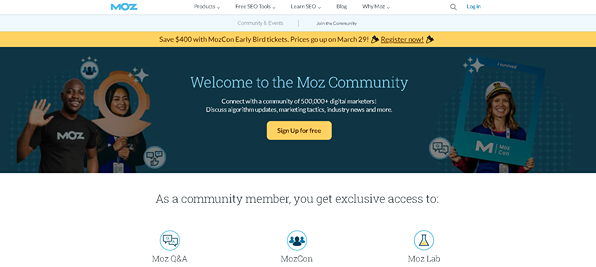
This approach lets Moz exhibit its comprehensive expertise while accelerating client outcomes by sharing hard-won lessons. Ultimately, Moz realizes that educating the market expands the category itself – anchoring status as both teacher and torchbearer.
Mobile First Approach
As mobile device usage continues its meteoric rise year over year, adopting a mobile-first approach in interface design has become non-negotiable for B2B companies in 2024. With over 90% of US adults now owning smartphones and mobile phones, representing over 60% of web traffic, optimizing for these mobile users’ on-the-go needs is essential.
Whereas in years past, companies may have designed for desktop first and then retrofitted for mobile, that tactic no longer cuts it. The priority is now crafting intended mobile experiences, emphasizing usability through pared-down interfaces and easy input/navigation. Only after the mobile experience is solidified do you scale up layouts for desktops. For a B2B e-commerce site, this could mean focusing first on smooth checkout and seamless product interactions through tap and swipe before embellishing with more screen real estate.
The bottom line is that mobile optimization has gone from “nice-to-have” to baseline requirements. If the mobile experience falters, search engine users will instantly bounce without seeing the desktop alternative. Plan accordingly or risk abandoned website traffic.
AI Content Creation
AI-powered content creation tools have rapidly evolved from novelty to necessity for robust B2B content strategies in 2024. As competition intensifies, manually drafting or reviewing every piece of content has become untenable. This is where AI for SEO comes in – increasingly capable of producing high-quality initial drafts that hit key SEO targets immediately.
The key is combining AI’s scalability with human oversight and expertise. For example, Articoolo and other automated content generators can rapidly research topics and produce articles or blogs optimized for SEO. However, the output still benefits from refinement and personalization by a knowledgeable writer or marketer. Together, they enhance relevance, quality, and performance beyond what either could achieve independently.
Per a SEMRush survey, 67% of businesses now leverage AI content tools with 78% finding positive impacts. This aligns with a 2024 Hubspot State of Marketing Report, where 79% of marketers agree AI improves quality. As these solutions grow more advanced in 2024, they will transition from valuable aid to indispensable assets. The numbers speak for themselves – blend artificial and human intelligence to stand apart from competitors still relying solely on manual processes.
Programmatic SEO
As Google search engine algorithms become more advanced, merely targeting broad keywords with generalized content no longer delivers the visibility B2B sites need. Instead, 2024 calls for a programmatic approach to SEO that employs automation to match high-intent search queries with customized landing pages, unlocking greater success through hyper-relevance.
Whereas traditional SEO focuses on manually optimizing cornerstone pages for broad appeal, programmatic SEO leverages data to efficiently generate pages precisely tailored to both high- and long-tail search phrases. The key advantage here is scalability—using software and algorithms, you can produce orders of magnitude more pages covering niche topics and buyer long tail keywords than any human effort could manage.
Consider a B2B company offering various cybersecurity services to clients across multiple countries. Taking a programmatic approach, they could automatically generate region—and offering-specific landing pages based on B2B SEO trends and demand. This would enhance visibility across languages and locations and boost conversions by addressing unique pain points per offering per geo-market.
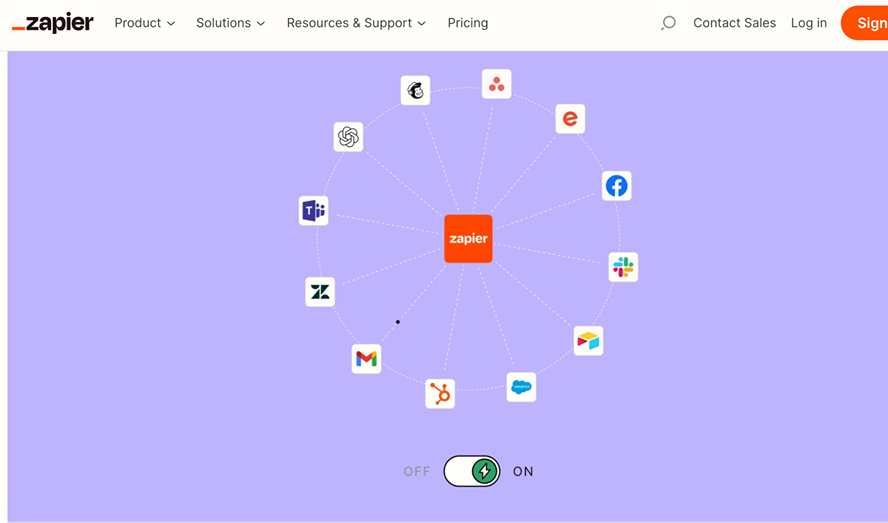
Industry leaders like Zapier already use programmatic SEO (for their integrations) to drive millions of annual page views. As more companies follow suit in 2024, adopting these efficient, high-return SEO strategies will increasingly separate the thriving from the struggling. Don’t get left behind; still, manually optimizing generalized content as your competitors programmatically own the long tail.
Content At Scale & Automation
As today’s frenetic digital landscape demands ever-growing volumes of fresh, high-quality content, B2B brands can no longer rely solely on human efforts to drive results. Instead, 2024 requires the strategic implementation of automated and AI-powered solutions capable of producing scale content while resonating with different types of leads.
Whereas past B2B SEO trends focused more on manual drafting and publication workflows, the sheer exhaustion of human resources now mandates blended human-machine approaches. Marketers must increasingly leverage technologies like intelligent content curation, AI-generated draft generation, and automated delivery based on user segmentation and journey.
The proof lies in the data and dollars: 58% of marketers plan to spend on automation like chatbots in 2024, while 70% of those deploying such tools have witnessed tangible improvements in customer experience. As these AI capabilities grow, their role as indispensable content acceleration engines solidifies. The future of effective B2B content marketing and SEO undoubtedly trends toward human-led, machine-executed strategies – bringing scalability and personalization to the fore.
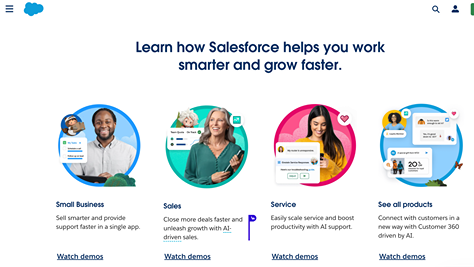
For example, Salesforce digests preferences through behavior analysis – powering automated, personalized content tuned to optimize unique resonance with target segments. By synthesizing signals from CRM data trails left across touchpoints, Einstein guides content matching based on topics and formats historical engagement suggests each constituency will embrace individually.
SERP Features in 2024
Gone are the days when plain blue link results dominated SERPs. Instead, 2024 presents ever-more diverse, dynamic, and prominent rich result features that B2B brands must optimize to capture user attention. From Featured Snippets to Knowledge Panels, People Also Ask boxes to filtered local packs – the playing field grows more promising and competitive by the day.
Capturing real estate in these eye-catching modules boosts visibility, perceived brand authority, and engagement. For a B2B company, optimizing content to trigger Featured Snippets can lend an air of industry thought leadership while driving conversions from ranked answers.
Experts predict niche, conversation-driven keywords around emerging topics will prove most valuable in 2024 as evergreen content faces saturation. Tapping into questions from communities like Reddit and TikTok unearths specific user intents that automated content cannot satisfy. Here, manual research and engagement shine through to provide unexpectedly relevant answers.
The takeaway is that B2B brands must evolve content strategies to align with SERP features representing the new normal. Treat these as optimization targets, not nice-to-haves. Pair human insight with AI efficiency to uncover and address niche interests in an increasingly dynamic search results landscape.
Passage Ranking
As search engine capabilities and content complexity advance, Google can no longer rely on page-level ranking signals alone. Instead, 2024 demands a more granular, passage-based analysis that allows in-depth pages spanning multiple subtopics to rank for precise queries. This shift to passage ranking transforms content optimization for B2B brands looking to enhance SEO leads.
In the past, pages typically targeted primary keywords related to the overall topic. However, new passage ranking allows specific sections within comprehensive guides to rank for associated searches. For example, an expansive post titled “Complete B2B Cybersecurity Guide” may cover DDoS protection, endpoint security, VPNs, and more. The DDoS section could rank for “DDoS prevention guide,” while the endpoint security passage targets “securing company endpoints.”
The significance of B2B content strategies is clear: lean into thorough, structured multi-topic guides that delve deep into subtopics. Optimizing these pages at the passage level amplifies relevance for high-level and precise sales funnel queries, expanding organic visibility and traffic potential. Prioritize depth and nuance – Google now evaluates and indexes accordingly.
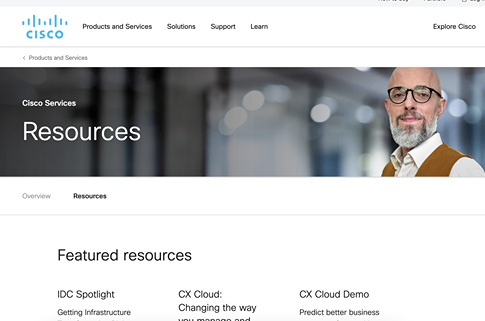
Understanding that the intersection of breadth and specificity secures search visibility, global technology leader Cisco tactically optimizes its extensive IT and cybersecurity guides to align with passage ranking opportunities. Though encompassing topics broadly through compartments within each asset, Cisco specifically focuses on portions to rank for precise queries independently.
Video Content
Video remains king—and continues to reign—as a dominant content medium for B2B brands in 2024. With individuals spending over 17 hours per week watching online videos, tapping into this prime channel for engagement and conversions is non-negotiable. Whether product demos, customer testimonials, or educational explainers, video uniquely informs and resonates at scale.
While video content has been a best practice for years, its importance for B2B marketers only amplified in 2024. Standing out requires embracing standard video and interactive formats using annotations, chatbots, and more. These let viewers actively engage, mimicking real sales conversations to build trust and qualify interest. Consider that 43% of customers actually prefer such interactive video content as it enables self-guided learning.
The experts agree that video SEO now represents a critical component of well-rounded strategies. Without showcasing the tangible value you provide through rich media, B2B brands increasingly risk losing business to those willing to do the production work. Already 30% of marketers are slated to start leveraging short-form video in 2024 if they’ve yet to jump on board.
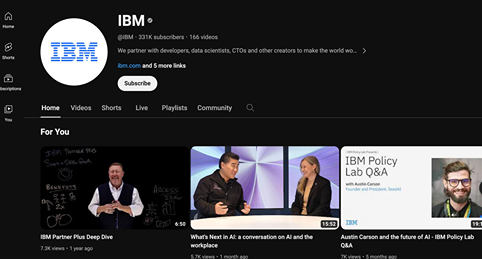
IBM strategically optimizes and amplifies video assets to simultaneously accelerate organic and social reach. Video visibility has significantly increased on Google and YouTube by tuning graphic imagery, file names, captions, alt text, transcripts, and subtitles to target buyer keywords.
Voice Search Optimization
The rise of voice assistants like Siri, Alexa, and Google has transformed how people discover and interact with online information. In 2024, voice search optimization will become indispensable to B2B content strategies. With over 72% of smart speaker owners adopting voice search as part of their daily routine, brands that fail to prioritize audio content and conversational queries risk vanishing from view.
Unlike typing keywords, voice questions use natural language in complete sentences. This demands optimizing pages to answer common industry inquiries conversationally and succinctly. For example, a B2B manufacturing company could create an FAQ section with audio-friendly responses to rank for voice searches like “What is predictive maintenance for factories?”.
The future is voice-activated. As more executives and decision-makers integrate smart devices into professional and personal contexts, they increasingly use voice search to fuel the buyer’s journey. The trick becomes matching their real-world phrasing with helpful, brand-building answers.
The playbook also now prioritizes rich result formats like featured snippets and audio cues over plain blue links. Appearing directly in voice search results lends credibility while driving conversions. Overall, branding, SEO, and voicetech converge in 2024 – claim your share with optimization.
Forbes targets featured snippets and position zero results by optimizing for voice search directly. Specifically, Forbes crafts FAQ and structured content with condensed, unambiguous answers easily digested by voice algorithms.

This firmware-inspired copy allows streaming comprehension that is critical for audio responses. In adopting this assistive tone and precision, search engines now register Forbes as an authoritative voice search source.
Prioritizing the User Journey & Search Intent
In today’s customer-centric landscape, brands can no longer take a one-size-fits-all approach to content. Instead, strategic B2B marketing now demands mapping content directly to buyer journey stages and the search intents underlying each phase. Whereas past strategies may have focused on generic top keywords regardless of meaning, 2024 calls for ultra-targeted optimization that evolves alongside the user’s changing questions.
For a B2B SaaS company, this could entail building a visual content grid that spans the customer journey to address motivations around industry and keyword research, competitor comparisons, specific product capabilities, purchasing factors, etc. Matching these informational needs with tailored content at each turn Spotlights opportunities while nurturing visitors into sales leads and loyal brand advocates.
As search behavior fragments across more niche queries, purchase intent provides the missing context for relevance. Understanding the motivations and concerns behind search phrases unlocks the blueprint for resonance. In 2024, the brands that win the zero-moment of truth speak directly to the heart of the matter—not just chasing keywords.
Page Speed & Core Web Vitals
As impatience prevails among digitally savvy buyers, site speed emerges as an undisputed prerequisite for an effective B2B web presence in 2024. Google now explicitly factors page experience metrics like Core Web Vitals (CWV) into rankings, including Largest Contentful Paint (LCP), First Input Delay (FID), and Cumulative Layout Shift (CLS). While optimizing these values alone won’t guarantee top placements, poor performance certainly invites decline.
For B2B brands, a sluggish site directly impacts conversions and growth. Site speed affects buyer purchase decisions – unsurprising when the average page loading time for search engine results on Google’s first page hovers around 1.65 seconds. The imperative now becomes constant optimization through technical audits, image compression, code minification, and Content Delivery Networks (CDNs) to load pages in under 2-3 seconds.
Dedicated maintenance also comes into play. Regularly updating plugins, themes, and other software prevents technical debt that bogs sites down over time. Though daunting, core web vitals represent an opportunity to stand out from lagging competitors that are still neglecting site performance. Quick web page loads coupled with seamless interactions signal credibility and value creation. Alternatively, passive sites imply similarly lackluster customer experiences—a risk no B2B business can ignore if they aim to earn trust and patronage in 2024’s high-stakes climate.
Local B2B SEO Trends
Geo-targeted content will become more immediate in 2024 as B2B brands recognize localization as far more than peppering city names into copy. Authentic hyper-local resonance now requires addressing the culture, conversations, and pain points distinctly impacting each served community.
Whereas broad local SEO previously involved topically relevant content but geographically ambiguous information, next-level strategies get granular. For example, an IT services company could create blogs and social posts specifically helping hometown manufacturers contend with recent supply chain disruptions. Such genuine understanding and helpfulness sparks engagement and goodwill.
As trust factors ever more prominently in purchasing decisions, the most persuasive brands now zone in on neighborhood-specific issues and then communicate tangible aid. This hyper-localized approach feels relevant because it connects truly adjacent needs with ready solutions—2024 calls for B2Bs to eradicate generic notions of regional variances. Target the fabric of each locale your business inhabits. Demonstrate through hyper-local content that you live there, too – and are ready to lend a hand.
Structured Data & Schema
As search engines become more sophisticated, merely plastering relevant keywords throughout copy no longer cultivates visibility. Instead, 2024 requires semantic schema markup to explicitly translate the purpose and relationships within website content for machines. Structured data provides the vocabulary for B2B brands to annotate critical details around products, services, events, and more so algorithms can better comprehend offerings.
Proper schema optimization grants access to the coveted real estate of rich results. By serving content in digestible, eye-catching formats directly in SERPs, clicks and conversions get a noteworthy lift. For a B2B company, something as simple as denoting product details via schema can surface goods in prominent product carousels with images, prices, reviews, and add-to-cart functionality.
With one-fourth of Google searches resulting in zero clicks, users find answers directly in search engines, and schema fuels this self-service experience. As voice search continues its ascent, speaking the structured language of machines also becomes essential to staying discoverable.
Honing in on User Experience
In an increasingly crowded digital landscape, B2B brands can no longer rely on generic, static content to capture audience attention and rank well—instead, 2024 calls for hyper-targeted optimization across two key dimensions: relevance and engagement.
On relevance, success means addressing the precise pain points and informational needs of your industry buyer personas through tailored guides, FAQs, and more. For example, a B2B software firm could create detailed resources on integrating their product with niche third-party platforms to solve specific user challenges. This alignment with search intent also signals quality to algorithms.
Engagement entails actively involving site visitors beyond plain text, using assessments, calculators, interactive infographics, and more to pique interest while quantifying value. A financial services B2B could provide ROI modeling tools for clients to estimate potential savings from using their offerings.
This two-pronged approach of dialing in on relevance while innovating engagement helps B2B brands stand apart from the sea of content sameness. Building resources that users want to find and explore cements trust and advocacy that static pages cannot achieve. Optimize utility and magnetism—establish your site as the go-to industry resource through rich, bespoke user experiences.
Higher Quality Content Across the Board
Rising above the mandated, monotonous B2B content in 2024 demands a triple-threat approach that spans originality, depth, and diverse media.
First, the unique value lies in the essence of “original” – fresh perspectives not recycled from generic templates or duplicated from competitors. Tools like Copyscape or Grammarly audit and update existing content and continually preserve relevance amid mounting content clutter. 59% of B2B buyers report losing interest in a product due to a bad buying experience. Personalized content from new sources strongly influences purchasing— make sure yours stands out.
Next, depth directly caters to decision-makers who expect and deserve more than surface-level information before committing to budgets. Invest in exhaustive research to provide actionable intelligence – compile hard evidence around challenges, then guide readers to tangible solutions. For example, a manufacturing tech vendor could publish a comprehensive guidebook exploring pain points with supporting data followed by step-by-step integration advice.
Finally, various presentation formats should be used, such as videos to demonstrate processes, snappy infographics to visualize data comparisons, and podcasts that lend a human voice to topics. Appeal to diverse learning preferences while adding engaging flair to complex subjects.
In 2024, breakthrough insights, hard-hitting analysis, and engaging delivery will set elite B2B content apart. Relying solely on obligatory keyword-stuffed blogs breeds obscurity. Instead, provide the practical, usable, and unmatched. Meet investor-level decision-makers on their level through quality content that respectfully captures both minds and market share.
The Future of B2B SEO Trends: Predictions & Possibilities
As we reflect on the B2B SEO trends explored so far, several overarching themes point toward what the future may hold in the ever-evolving search landscape:
- Mobile optimization will continue to be prominent. With mobile devices accounting for over 60% of traffic today and voice search seeing a meteoric rise, optimizing for these on-the-go user intents only grows more crucial.
- AI and automation are becoming greater priorities. Already, early adopters of AI content tools see positive impacts, and adoption rates continue to climb rapidly. Repetitive manual SEO efforts will phase out as machine learning steps in.
- Fragmentation of content across formats and journeys—With passage indexing, video, voice, and structured data surging ahead, organizations must diversify optimization approaches to sustain visibility as user behavior fragments.
- Localization and personalization drive relevance. From voice queries to hyper-local content, resonance demands addressing the unique interests of each target audience segment with tailored precision.
While some constants like EEAT endure amidst mounting search volatility, flexibility, and specificity emerge as requisite success factors. As Google raises the bar on depth, speed, and quality, B2B brands must double down on understanding and serving audience needs through technology-fueled yet human-centric SEO strategies. The winners of the 2024 search will solve not just for today but also for the accelerating changes already visible on the horizon.
FAQs About B2B SEO Trends
Below are some of the most frequently asked questions about B2B SEO trends.
Yes, SEO is highly effective for B2B businesses. Research shows 3 out of 4 prefer learning about companies via content versus a sales rep. Optimizing content for visibility in organic search engine results pages lets B2B companies reach more of their target audience during the awareness and consideration funnels.
Some of the key metrics used to measure and track B2B search engine optimization success include:
Organic Traffic: The number of visitors from search engines to your site. Aim for steady month-over-month growth. This indicates growing visibility and interest.
Click-Through Rate: The % of searchers clicking from a search engine results page onto your content. Higher CTRs signal relevancy.
Conversion Rate: The % of organic traffic that converts into SEO leads or customers. Optimizing landing pages for conversions lifts this metric.
Keyword Rankings: The positioning of your web page for target keywords. Improving search rankings, especially for priority terms, helps drive traffic growth.
Site Authority is an aggregate score from tools like Moz and SEMrush that measures domain authority and trust signals. A site authority value of at least 40+ aids ranking potential.
Links and Referring Domains: The number of unique external sites linking to your domain. Referring domains indicate awareness and credibility for SEO and lead generation.
An effective content strategy is vital for improving B2B SEO leads. The best lead generation ideas in a strategic approach typically include:
Conducting thorough keyword research to identify high-value search terms and buyer interests to guide content creation.
Creating differentiated, high-quality content like articles, ebooks, case studies, and videos explicitly optimized around those priority keywords.
Structuring content into themed clusters or pillars focused on specific products, services, or stages of the buyer’s journey to boost relevance.
Promoting and conducting outreach marketing through social media, emails, influencers, and other channels to increase visibility, backlinks, and engagement with target audiences mapped to your B2B lead generation strategy.
Continually tracking metrics like search engine rankings and conversions per piece of content to identify gaps, top-performing content, and opportunities to expand on existing content.
Given extended sales cycles, complex stakeholder sign-off, and sizeable deal values, B2B digital marketing funnels understandably convert at lower rates than business-to-consumer plays. However, dialed-in SEO strategies still aim to capture business from incoming organic traffic. As per 2024 benchmarks, the average conversion rate for B2B SEO landing pages hovers around 2.6%. Things like intent-aligned copy and chatbots help replicate the high-touch advisory experience expected by B2B buyers.
What You Need to Remember About B2B SEO Trends
While constants like optimizing expertise and authority carry forward, continuous flexibility as 2024 brings mounting search volatility proves key. As audiences, algorithms, and tech advance, the B2B brands that resonate build SEO strategies atop human insight and machine efficiency – ever-enhancing relevance through purposeful personalized experiences.








